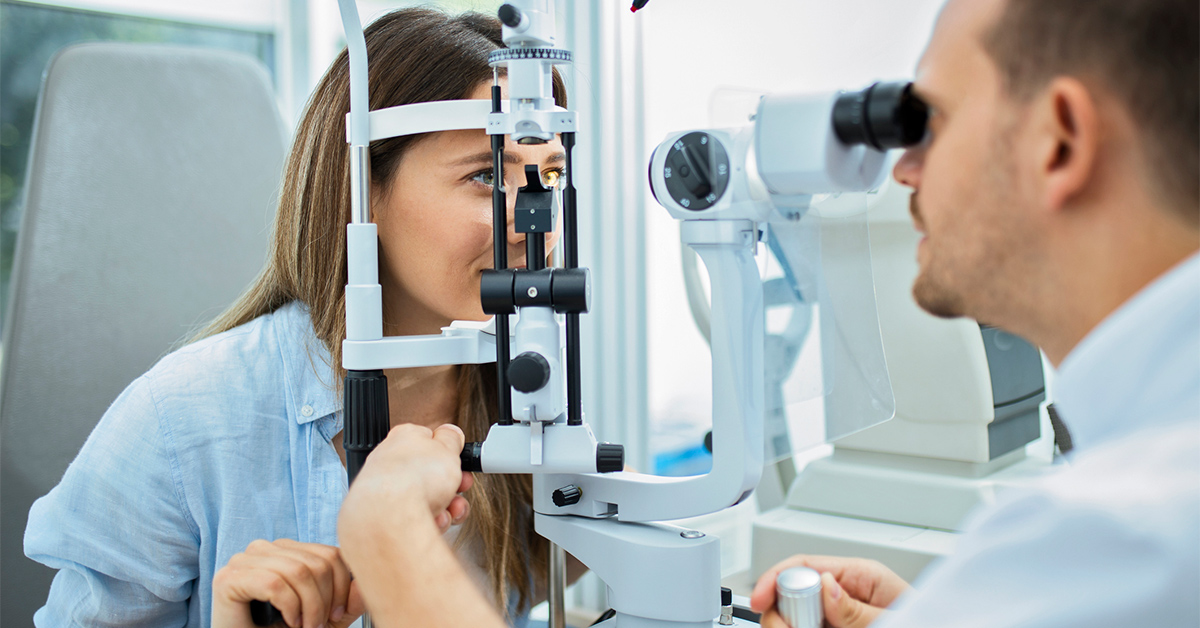Checking Out the most recent Technological Improvements in Optometry and What They Mean for Optometrists
From the accuracy of Optical Coherence Tomography to the nuanced understandings provided by AI-driven analysis devices, these technologies are setting brand-new criteria in individual evaluation and treatment. As these advancements penetrate the technique, optometrists are encountered with the obstacle of welcoming these tools to boost patient end results.
Technologies in Diagnostic Devices
Progressing the area of optometry, advancements in diagnostic tools have transformed the means eye treatment professionals examine and detect eye conditions and visual disabilities. The past years has actually observed significant technological developments, allowing more thorough and precise assessments.
Another key innovation is the introduction of sophisticated corneal topography systems, which map the surface area curvature of the cornea with precision. These tools are particularly helpful for fitting get in touch with lenses and identifying corneal problems. Electronic retinal imaging has actually changed typical ophthalmoscopy, using in-depth, panoramic views of the retina that help with extensive visual examinations.
The development of wavefront aberrometry has actually likewise been vital, making it possible for the evaluation of refractive mistakes with unequaled precision (Optometrist Chino). This technology helps in tailoring rehabilitative lenses and enhancing surgical outcomes for refractive surgeries. Jointly, these diagnostic developments encourage eye doctors to supply exceptional individual treatment, making certain early treatment and tailored treatment techniques, eventually boosting visual health outcomes
AI in Patient Administration
Building on the foundation of cutting-edge analysis devices, the incorporation of synthetic knowledge (AI) in person monitoring stands for a transformative leap for optometry. AI systems are increasingly used to enhance effectiveness, accuracy, and customization in individual treatment. By evaluating substantial amounts of information, AI can recognize patterns and anticipate possible eye problems, making it possible for eye doctors to customize interventions a lot more successfully. This ability is crucial in managing persistent eye conditions such as glaucoma and diabetic person retinopathy, where early discovery and continuous monitoring are vital.
Moreover, AI-driven platforms assist in streamlined person communications and management procedures. Automated organizing, digital appointments, and individualized follow-up strategies not only enhance patient satisfaction however likewise maximize time monitoring for experts. These systems can triage individuals based upon the necessity of their conditions, guaranteeing that those in crucial need receive timely attention.
Additionally, AI improves decision-making by supplying optometrists with evidence-based recommendations and therapy pathways. By integrating data from electronic wellness records, AI tools supply understandings that notify medical choices, minimizing the risk of errors and boosting client end results. As AI proceeds to evolve, its role in client management will likely broaden, improving the landscape of optometric treatment.
Developments in Retinal Imaging
In the realm of optometry, retinal imaging has observed remarkable technological developments that are enhancing diagnostic abilities and client care. Developments such as Optical Coherence Tomography (OCT) and fundus digital photography have revolutionized how eye doctors imagine and evaluate the retina.
Improved imaging methods like OCT angiography are more refining analysis accuracy. Optometrist Chino. Such innovations help with the recognition of min retinal modifications that can indicate disease progression.
In addition, improvements in fabricated knowledge are enhancing retinal imaging by enabling automatic analysis of large datasets. These systems assist optometrists in identifying patterns a sign of pathology, therefore improving analysis precision and performance. Jointly, these technologies are changing retinal imaging right into a foundation of modern eye care, enhancing outcomes and increasing restorative possibilities.
Teleoptometry's Growing Duty
Teleoptometry is significantly ending up being an essential component of eye treatment, driven by improvements in digital communication and diagnostic tools. This is specifically advantageous in rural and underserved areas where accessibility to specialized eye treatment is typically restricted.
The assimilation of artificial knowledge (AI) more enhances teleoptometry, enabling the evaluation of visual data and helping in the detection of ocular problems such as glaucoma and diabetic retinopathy. AI-powered formulas can swiftly translate complex imaging information, providing eye doctors with valuable insights that reinforce scientific decision-making.
Furthermore, teleoptometry supports continuity of treatment via seamless combination with electronic health and wellness records (EHRs), enabling optometrists to preserve detailed client backgrounds. When consulting with different professionals., this makes certain that patients receive regular and individualized treatment even.
In spite of these advantages, difficulties remain, consisting of making certain data security and taking care of client assumptions. Nevertheless, teleoptometry stands for a significant stride towards more available, reliable, and patient-centered eye treatment. As innovation advances, its duty is positioned to expand additionally.

Future Fads in Eye Treatment
A myriad of innovative fads is readied to reshape the future of eye care, driven by technical advancements and the evolving demands of patients. One considerable trend is the assimilation of expert system (AI) in click over here now diagnostics, which guarantees to enhance the accuracy and effectiveness of eye exams. AI formulas can examine vast quantities of data from retinal pictures, potentially identifying problems like diabetic person retinopathy and glaucoma earlier than conventional approaches.
Moreover, personalized medicine is acquiring traction in optometry, with hereditary testing educating tailored treatment strategies. This method aims to maximize individual end results by customizing treatments to individual genetic accounts. Wearable technology, such as smart get in touch with lenses, is also coming up, supplying real-time monitoring of intraocular stress or sugar levels, hence supplying continuous insights into systemic and eye health and wellness.
The fostering of increased fact (AR) and online fact (VR) in training and individual education and learning is another arising fad. These innovations provide immersive experiences that can boost understanding and abilities both for clients and optometrists. As these trends evolve, eye doctors should remain abreast of technical developments to give advanced treatment, ensuring improved patient results and contentment in the vibrant landscape of eye care.
Final Thought

Collectively, these diagnostic advancements encourage optometrists to provide premium patient care, guaranteeing very early treatment and tailored treatment methods, ultimately improving aesthetic wellness outcomes.

As these modern technologies proceed to evolve, eye doctors need to adapt and incorporate them into technique, ultimately enhancing workflow efficiency and raising the requirement of eye care provided to patients.